Climate Smart
Biotech
By Alex Keimig
Three Cullen College researchers are combining their respective talents to support small-scale, underserved and limited-resource farmers with practical solutions to combat the effects of climate warming on global food supply. Their work is part of the University of Houston’s contribution to a $5 million cooperative project funded by a grant from the U.S. Department of Agriculture (USDA).
Associate professor of biotechnology Venkatesh Balan, Ph.D. and assistant professor of biotechnology Abdul Latif Khan, Ph.D., are investigating the application of freshwater algae and silica products to improve soil microbiome, stimulate plant growth and improve stress resilience against climatic change. These interventions are expected to reduce dependence on traditional nitrogen-phosphorus-potassium fertilizers. Assistant professor electrical and computer engineering Xiaonan Shan, Ph.D., is working to design, build, and test low-cost, efficient sensors to record temperature to measure greenhouse gases (GHG), carbon dioxide, and methane levels in agricultural fields. Together, their work forms a unique feedback loop.
“The goal of this project is to educate and encourage low-income and underserved farmers by introducing them to and training them in adopting Climate-Smart practices in the daily operations of their farms,” says Shan.
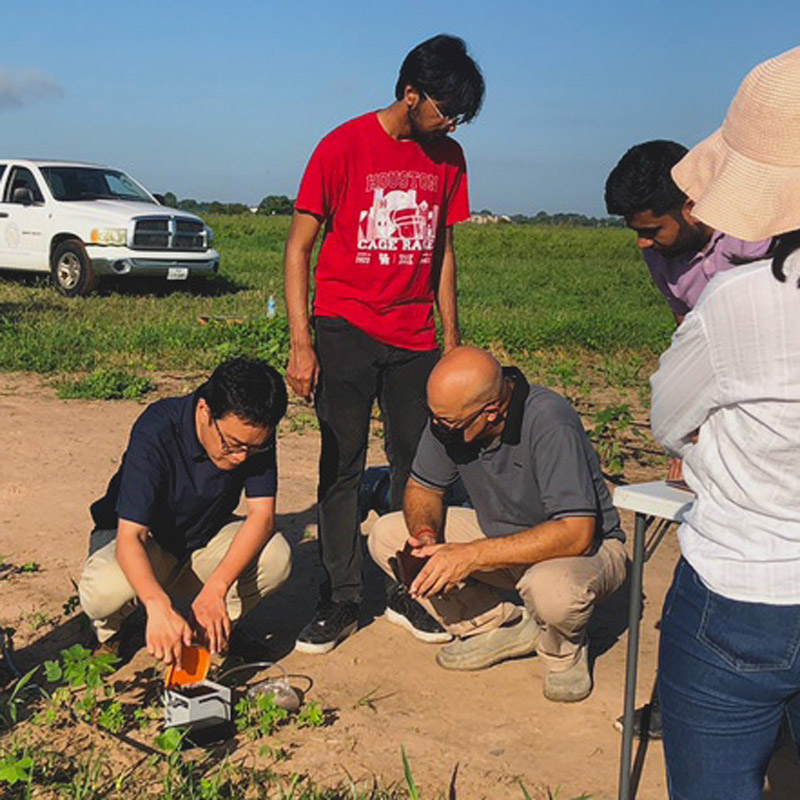
UH researchers testing out biotech robot dog.
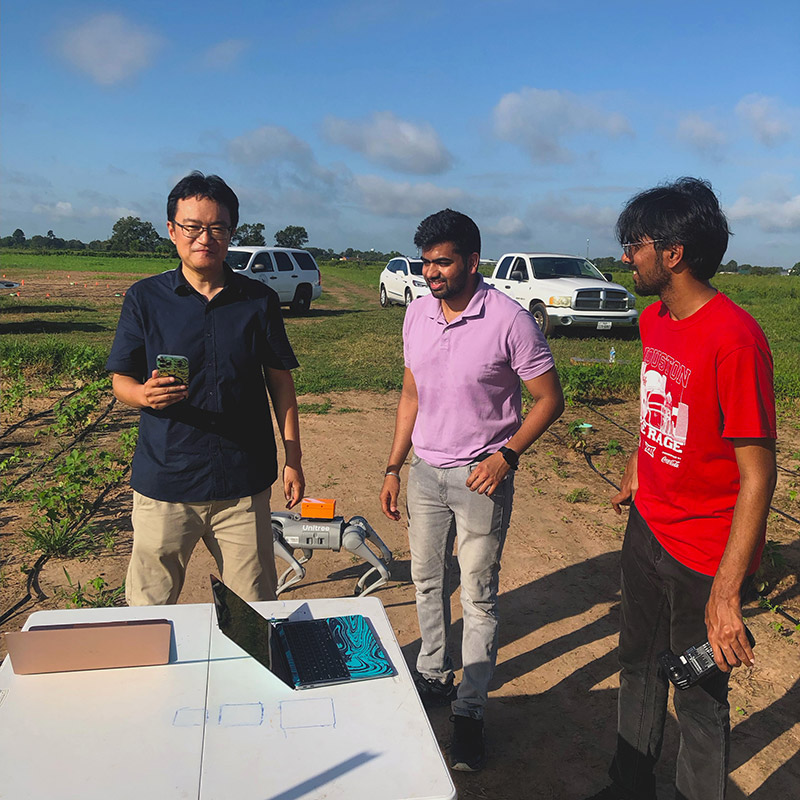
Xiaonan Shan with students testing out new robot dog.
The practices in question are the application of silicon and algae products to agricultural soil and fields, with dual goals of increasing crop health and production and increasing carbon sequestration.
Agriculture contributes approximately 11% of total GHG in the U.S., including carbon dioxide, nitrous oxide, and methane emissions. These emissions are often associated more with livestock than plant crops, but according to Balan, 2.2 metric tons of carbon dioxide are released for every metric ton of traditional fertilizer media produced. On average, roughly 20 million metric tons of nitrogen, phosphate and potash — collectively known as N-P-K — are produced for fertilizer yearly in the United States. That’s 44 million metric tons of carbon dioxide.
My lab is focusing on silicon as a nutrient management strategy to improve plant growth, resist climate change stress, and reduce greenhouse gas emissions. Abdul Latif Khan
“The population is increasing drastically, contributing to pollution, and there is a growing demand for food with significant pressure on the agricultural land that provides it,” says Balan. “Currently, we’re using too much chemical fertilizer to meet demand, but that is increasing GHG emissions and excess fertilizers wash out by rain polluting the waterways, too. There is a certain limit beyond which the soil cannot tolerate any more chemical fertilizers, meaning that over a period of years, no matter how much fertilizer we use, crop yield keeps decreasing because the soil microbiome and soil quality keeps depleting.”
So how do climate-conscious farmers proceed? Are there ways to reduce dependence on N-P-K fertilizer, and could the answer be found in nature? How can researchers educate small-scale growers about available interventions and how to apply them? These are exactly the questions the trio intend to help answer.
Enter a robotic dog.
Carrying a small array of smart, low-cost sensors, this robotic dog — more formally known as a quadruped robot — can be remotely-controlled to access tough terrain, whether rocky, dry, soft, or grassy, to collect gas samples and other data from a given piece of farmland. The sensors can also be affixed to an airborne drone, which may be limited to clearer terrain but reduces the overall cost for farmers even further. The goal, says Shan, is a wireless network that allows for long-term monitoring of carbon sequestration within soil through the measurement of GHG emissions.
This sequestration is primarily achieved through cultivating healthy, hardy plants — plants that can stand up to increasingly wide ranges of climatic stresses, including rising temperatures and prolonged drought conditions. A photosynthesizing plant is a natural carbon dioxide scrubber, and algae and silicon may be the keys to bolster the health these plants.
“With the passage of time and the effects of our agricultural practices, we are losing microbial diversity from our soil system. That is a key concern for soil scientists and microbiologists alike,” says Khan. “My lab is focusing on silicon as a nutrient management strategy to improve plant growth, resist climate change stress, and reduce greenhouse gas emissions.”
Silicon’s natural ability to maintain moisture in the soil system could also help guard against the stress of drought periods during summer heat. This not only protects the existing crop fields but helps save money and resources on irrigation in an already water-scarce season.
Interventions like this may be attractive to farmers not only because of the study’s immediate participation incentives or the potential for increased yield, but because silicon is cheaper than NPK. This means that combining the two may help save on fertilizer costs while simultaneously reducing the demand for carbon-releasing NPK production.
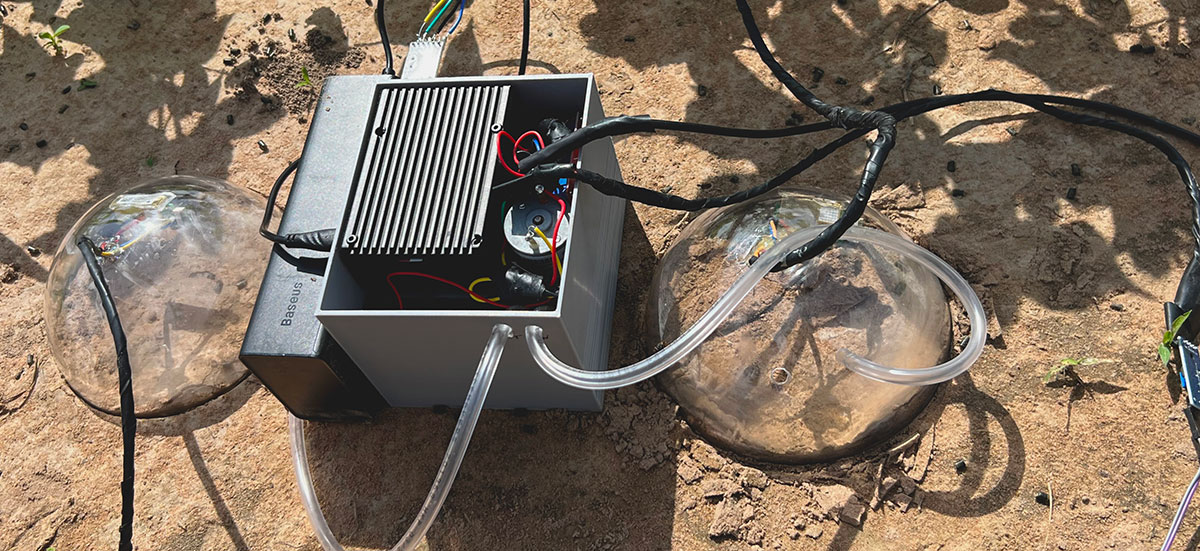
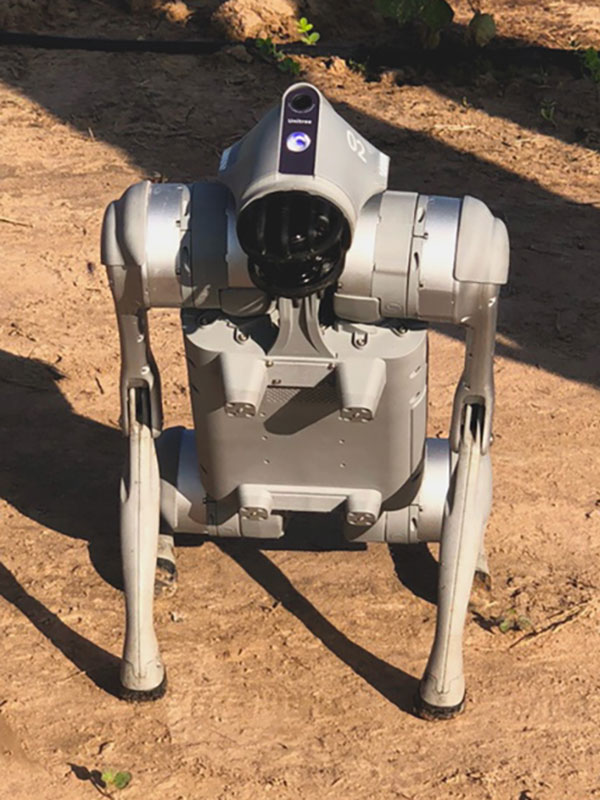
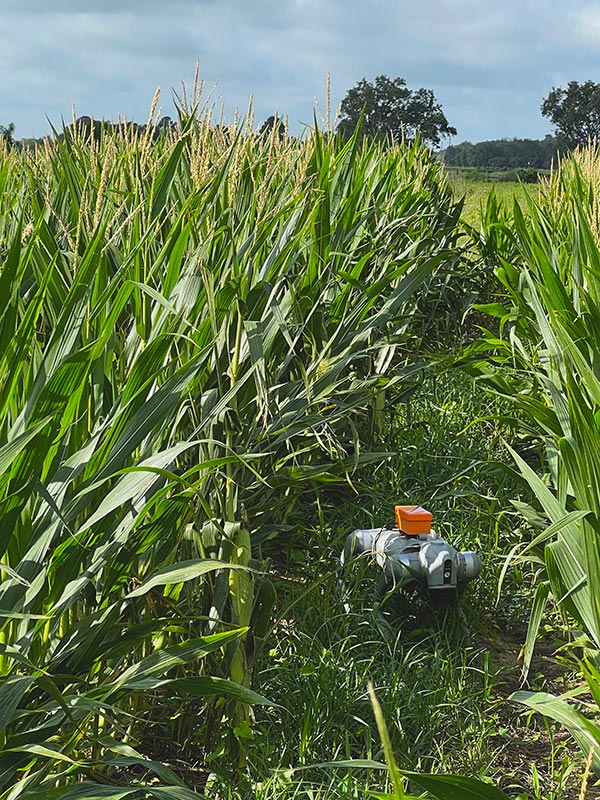
Balan’s complementary work focuses primarily on applying microalgae to agricultural fields to reduce GHG emissions.
“The good thing about microalgae is that it does the opposite of what we do with chemical fertilizer production. It consumes 1.8 tons of carbon dioxide for every ton of dry algae reduced,” Balan says.
The algae — applied as granules that mix with irrigation water — does its best work when it stays near the plants that need it. A teaspoon of soil contains approximately one billion bacteria; some helpful, some harmful. As a living organism, it is in constant competition for resources.
“Algae are known to produce metabolites to alter its environment to deter toxic organisms and attract good symbiotic organisms. By adding this algal slurry, we can increase the product yield by up to 15% depending on the soil conditions,” he adds.
Their research may have significant implications for the future of agriculture, but in keeping the focus on affordable, easy-to-implement interventions, this cooperative study with Prairie View A&M University and Texas A&M University still increases resource equity for small-scale, underserved and limited-resource farmers today.
“It may sound like it‘s too good to be true,” says Balan, “But that’s the beauty of nature.”